Results 1 to 10 of 41
-
08-18-2013, 01:41 PM #1
 Question to the natural stone experts
Question to the natural stone experts
Which stone is this:
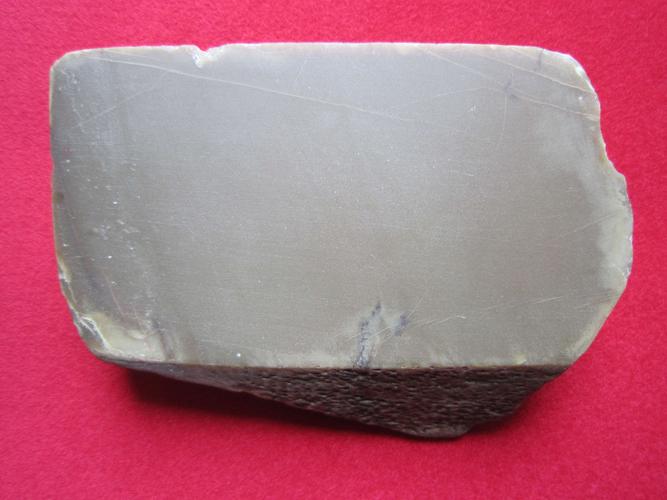
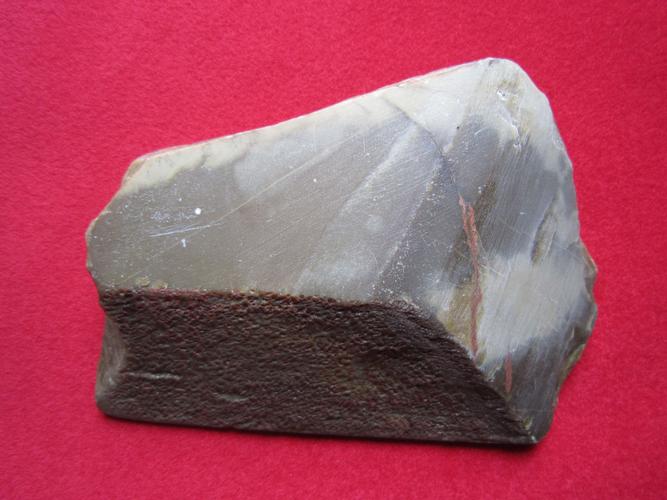
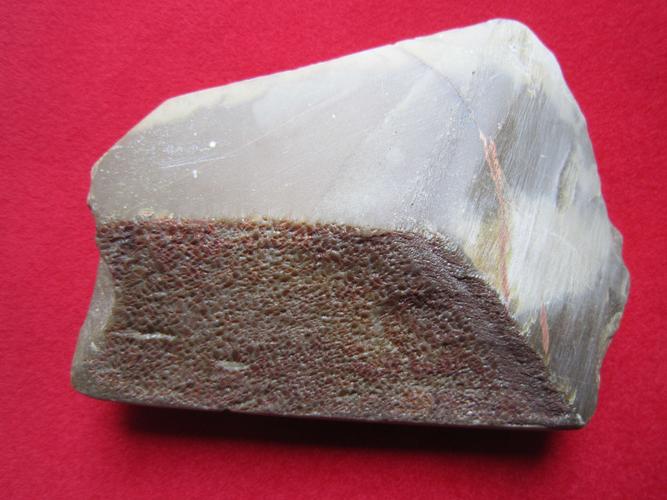
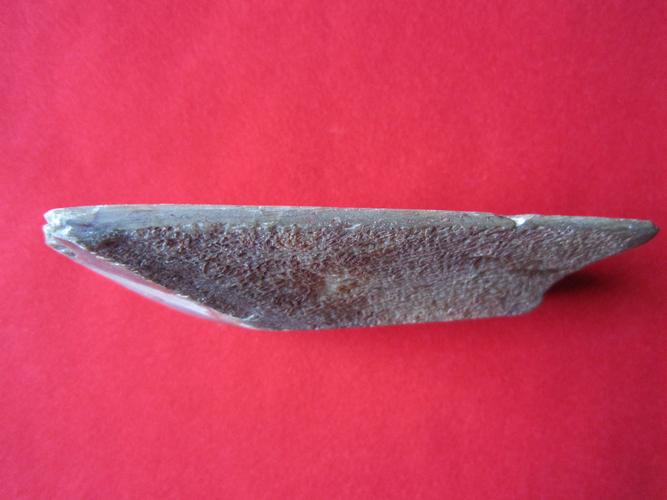
Any idea anyone? Any other stones like this out there?
-
08-18-2013, 04:29 PM #2

Is it not an Escher or Thuringan ? Looks like it to me.

-
08-18-2013, 04:39 PM #3Senior Member


- Join Date
- Jan 2011
- Location
- Roseville,Kali
- Posts
- 10,432
Thanked: 2027
Indian love stone??
-
08-18-2013, 04:41 PM #4

It is a very hard stone compared to the Escher/Thuringian waterwhetstones. More like Novaculite. Can be used with water or oil. However not a japanese nor a CF/LI and not an ark.
-
08-18-2013, 05:11 PM #5Senior Member



- Join Date
- Apr 2008
- Location
- Essex, UK
- Posts
- 3,816
Thanked: 3164
It looks like it shares some of the features of a turkey oilstone - one that has not been seasoned in oil. Like one of the 'new' ones. The colurs, fractures and colouration in the crack are reminiscent of the exaples I have. They are very hard and have similar looking skin, sometimes with small holes like bubbles, and fissures.
Its hard to tell from such a small piece, though.
Vasilis would know better than me.
Regards,
NeilLast edited by Neil Miller; 08-18-2013 at 05:24 PM. Reason: lots of typos - damn tablet pc!
-
08-18-2013, 05:24 PM #6

Good guess Neil, thanks for the answer. But the stone is not a turkey stone!
These kind of stones were very well know in the middle ages. They were found in a lot of old middle age centres, also in Haitabu, which was a famous trading centre of the vikings in the 9-11th century.
Also they are found in some celtic opidums which existed more than 2000 years in the past.
The stones were mined constantly until WW1 and fewer till WW2 as the quarries were carried to end.
-
08-18-2013, 05:47 PM #7Senior Member



- Join Date
- Apr 2008
- Location
- Essex, UK
- Posts
- 3,816
Thanked: 3164
That is why I said one of the new ones, Hatzicho.
They are not quite the same as the old ones - the old ones seem finer, but once seasoned in olive oil they look quite similar. 'New' just means new source, the stone themselves are ancient, of course.
I have a number of the vintage ones and several new ones from Vasilis - he found a supplier, and a lot of people on the coticule forum use them in conjunction with a coticule.
Unlike the vintage type, these ones are at the bevel-setting end of the spectrum, but benefit from a slurry (extremely hard to make without a diamond hone) which breaks down so you can get to mid level before finishing with a coticule.
There are, as we know, many types of this stone from many regions, none of which can be traced back to a turkish origin, except perhaps by way of trade routes. Ther has been extensive discussion on this forum in the past about them and their origins, for anyone who cares to use the search function (which I find quite unreliable, BTW).
As I say, Vasilis is very qualified to tell us more about the 'new' turkish hones (or turkey oilstones, or cretan hones, or candia hones or ex-ottoman empire hones or whatever else people want t call them! )
)
Regards,
NeilLast edited by Neil Miller; 08-18-2013 at 05:50 PM.
-
08-24-2013, 03:28 PM #8

Really no stones like this one out there? There must be some, they have been traded for the last 300 years!
The stones were mined in 2 different qualities a yellow one and a blue one, whereas the yellow layers have been found only deeper in the earth and must therefore been mined underground.
Here is a couple more of these stones:
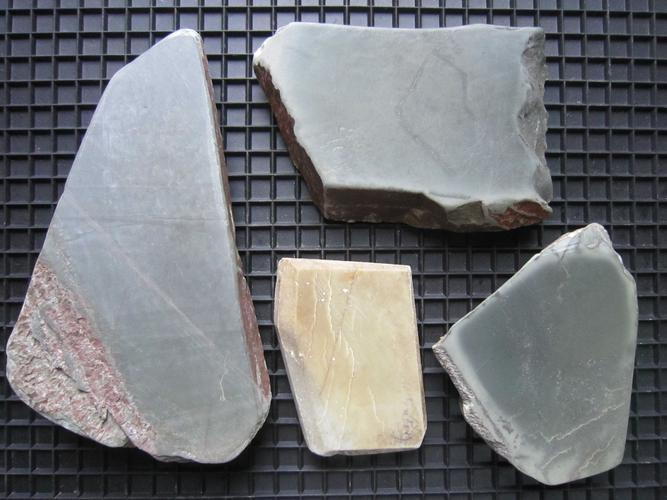
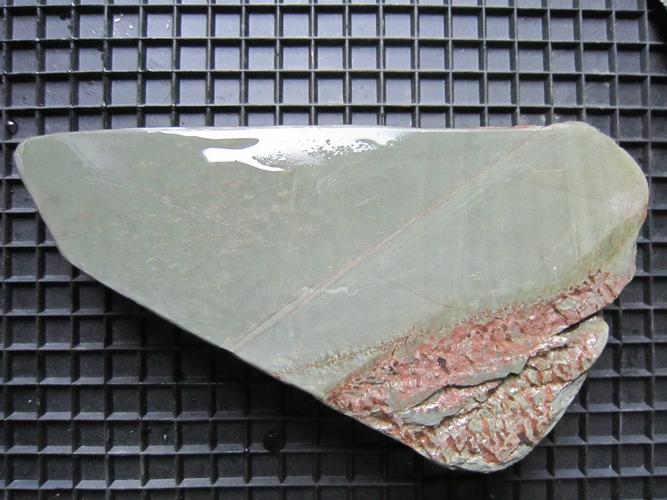
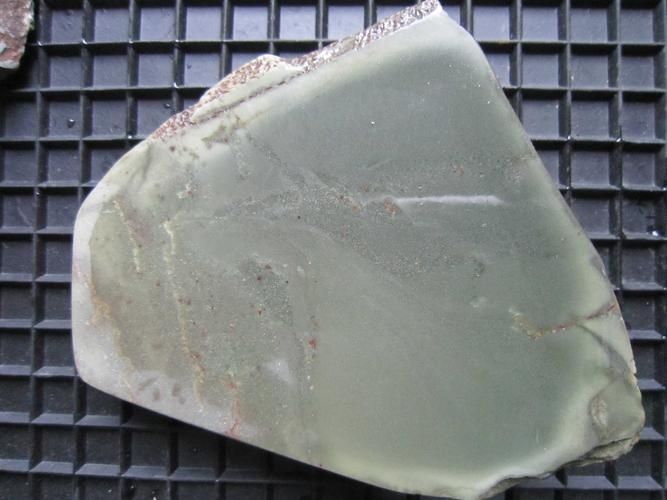
The typical attribute of the stones is a harsh rhombical structur with enclaved red iron oxide on the outside of the layer:
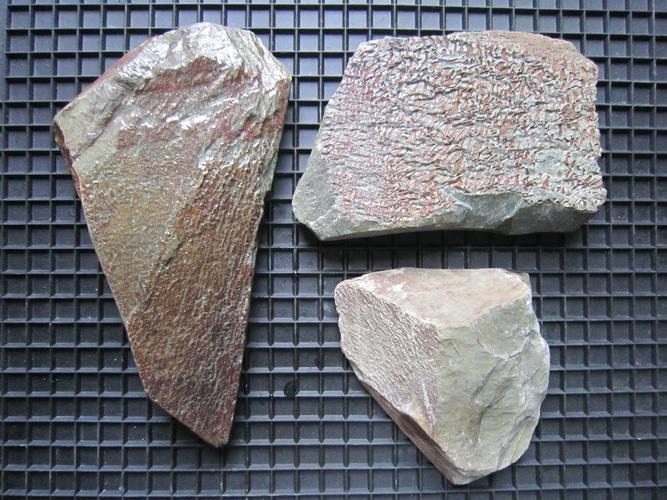
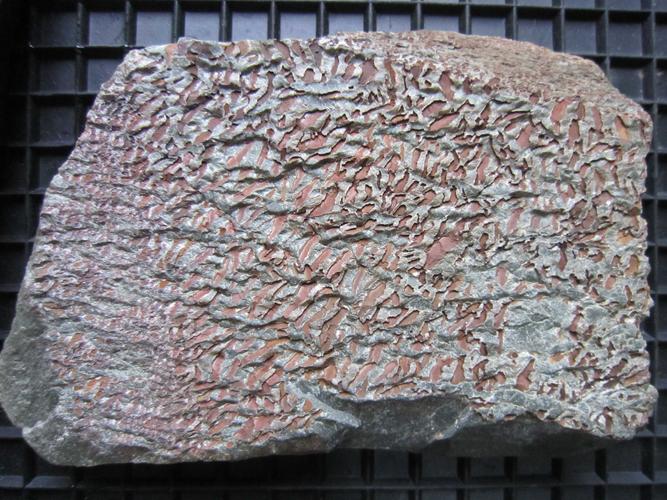
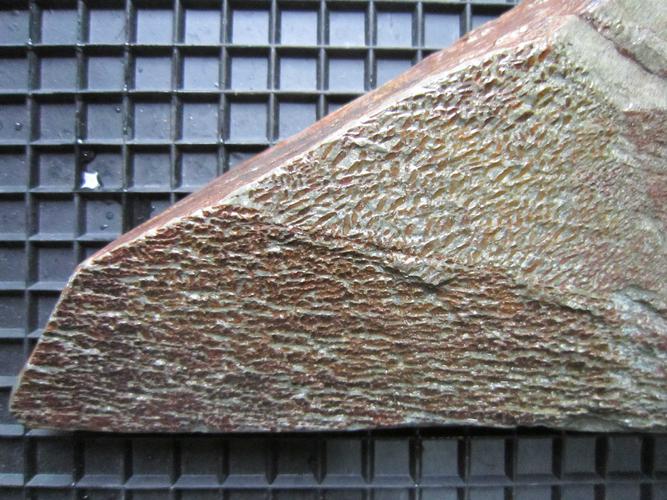
This attribute also gave this kind of stones there typical trading name.
The hones have been used by barbers, jewellers and goldsmith mainly.Last edited by hatzicho; 08-24-2013 at 03:53 PM.
-
08-24-2013, 05:42 PM #9Senior Member



- Join Date
- Apr 2008
- Location
- Essex, UK
- Posts
- 3,816
Thanked: 3164
Have I misunderstood, Hatzicho - is it a quiz? Do you already know what it is called?
Regards,
Neil
-
08-25-2013, 12:52 PM #10

Well sorry Neil,
the thread might indeed be a little bit misunderstanding from the wording. This is not a quiz and please be sure that I don’t want to play any games with the experts.
I really thought this kind of stones must be known, maybe not from the name or even their origin, but from the appearance and application.
Well to disclose the secret, this stones are thuringian stones. Not the soft well known waterwhetstones like the Escher labeled hones which are upper Devonian age and were first discovered in the year 1806 in Steinach Germany.
The stones were are talking about here are much older, as already said, they have been traded from the early middle ages on, they were found in the important European trading centers like Haithabu, which was a main centre of the Vikings around the 10th century. The stones are of Ordovician age and represent a special class of whetstones.
The stones are especially found in the mountains of so called “Schwarzburger Sattel” in Thuringia and Frankonia. There are a lot of well known quarries and each stone from different quarries has different appearances, hardness and honing capabilities.
Most of the stones are very hard, comparable in hardness to a Charnley Forest/ LI or an Arkansas, they also tend to conchoidal fractures (thank you Mike for this expression) and the chips and break lines are somehow comparable to novaculite stones.
The stones I have shown in the pictures above belong to the oldest known quarry, the Hiftenberg.
According to their typical appearance with the rhombical structure on the back, the stones have been called “Hiftenberger Hirschornschalen” (I know a word nearly unspeakable for Americans ):
):
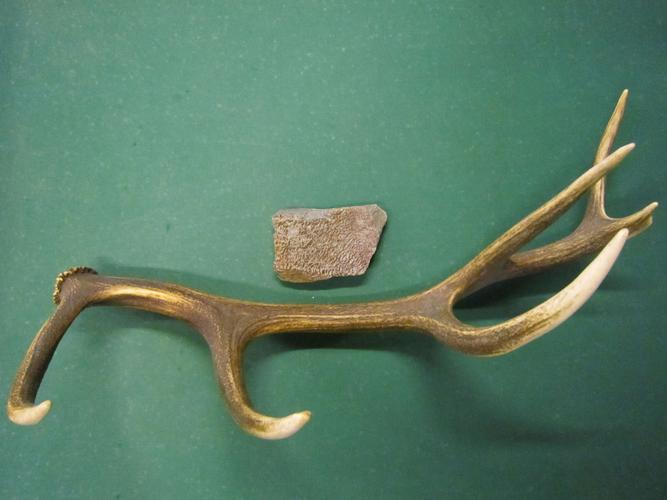
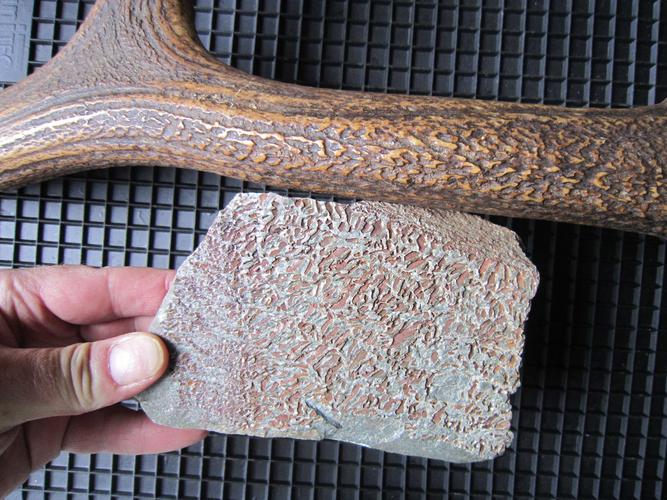
The mine was closed in 1930.
Last renter of the quarry was the J.G. Escher company (ca. 1928 -1930).
But keep in mind, this stones are not comparable to the thuringian waterwhetstones!
I have not seen any labeled Ordovician hone so far. But Escher as well as the companies that rented the mine before - i.e. Bösenberg&Trinks Co. till around 1927 - sold this stones also.
So look out for this kind of stones, they are worth to own if you recognize them at an antique store or somewhere else!
-
The Following User Says Thank You to hatzicho For This Useful Post:
Lemur (08-25-2013)


 43Likes
43Likes LinkBack URL
LinkBack URL About LinkBacks
About LinkBacks






 Reply With Quote
Reply With Quote